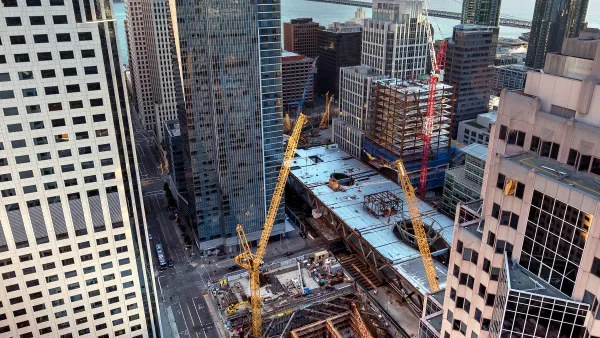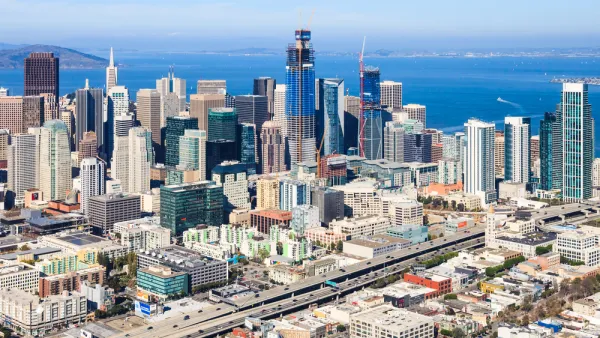Proposition E, a ballot initiative up for vote in San Francisco in May, is one of the most radical planning positions in recent years, attempting to reduce housing costs by limiting housing demand.

Joe Eskenazi reports on a game-changing proposition on the ballot in San Francisco in March, called Proposition E, which will cap the amount of office space the city can construct based on whether the city meets state-mandated affordable housing targets.
As noted by Eskenazi, Proposition E expands the powers of Proposition M, which the city approved in 1986 to cap the amount of office space in the city.
Prop. E would take things further. It would directly tie the amount of office space this city can construct to the amount of affordable housing it produces. And if the city comes up short on the latter — as it almost always does — then it will be proportionally restricted on the former.
According to Eskenazi, it's hard to imagine a San Francisco where the ballot initiative fails. "San Francisco’s electorate in March of 2020 would arguably vote for 'less office space' even without the 'more affordable housing' tie-in." The question then becomes what will happen if and when the city approves the proposition. The mayor's office is making the case that the proposition would reduce office construction and "bleed away fees intended for affordable housing." Proposition supporters point to a 2019 study that found that "fees for affordable housing reaped via the construction of office space are actually dwarfed by the affordable housing needs induced by that office space," writes Eskenazi [emphasis from the original].
A follow up article by Sarah Holder and Kriston Capps picks up on the same questions about whether the proposition will help or hurt the city's housing affordability crunch.
FULL STORY: Proposition E, barring unforeseen lunacy, will pass — handily. But then what?

Analysis: Cybertruck Fatality Rate Far Exceeds That of Ford Pinto
The Tesla Cybertruck was recalled seven times last year.

National Parks Layoffs Will Cause Communities to Lose Billions
Thousands of essential park workers were laid off this week, just before the busy spring break season.

Retro-silient?: America’s First “Eco-burb,” The Woodlands Turns 50
A master-planned community north of Houston offers lessons on green infrastructure and resilient design, but falls short of its founder’s lofty affordability and walkability goals.

Test News Post 1
This is a summary

Analysis: Cybertruck Fatality Rate Far Exceeds That of Ford Pinto
The Tesla Cybertruck was recalled seven times last year.

Test News Headline 46
Test for the image on the front page.
Urban Design for Planners 1: Software Tools
This six-course series explores essential urban design concepts using open source software and equips planners with the tools they need to participate fully in the urban design process.
Planning for Universal Design
Learn the tools for implementing Universal Design in planning regulations.
EMC Planning Group, Inc.
Planetizen
Planetizen
Mpact (formerly Rail~Volution)
Great Falls Development Authority, Inc.
HUDs Office of Policy Development and Research
NYU Wagner Graduate School of Public Service




























